The crew of a FedEx Boeing 767 landing at Austin Bergstrom International Airport had to go around and overfly a Southwest 737 taking off on the same runway early Saturday. The FAA and NTSB have confirmed they’re investigating the incident, which happened about 6:40 a.m. local time. The NTSB described it as a “possible runway incursion and overflight involving airplanes from Southwest Airlines and FedEx.” The FAA said, “the pilot of the FedEx airplane discontinued the landing and initiated a climb out,” the FAA said in a statement to The Associated Press.
The 767 had been cleared to land and the 737 cleared to take off on the same runway. Tracking data suggests the 767 was less than 100 feet above the Southwest plane as the widebody crew hit the gas. The Southwest crew continued their takeoff and headed to Cancun. The 767 landed a short time later. Southwest didn’t comment immediately and FedEx only confirmed that something happened. “FedEx Express Flight 1432 from Memphis, Tenn. to Austin, Texas safely landed after encountering an event just before landing at Austin Bergstrom International Airport this morning,” the company said in a statement to AP.


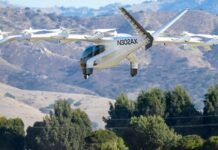
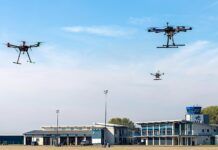

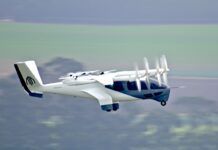
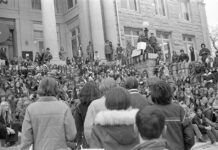


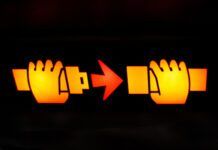
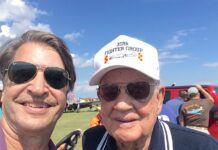
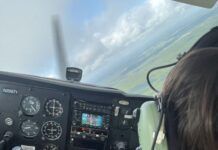


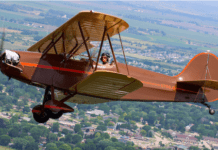
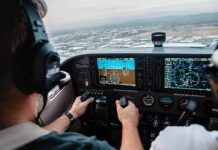

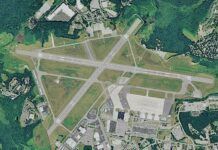
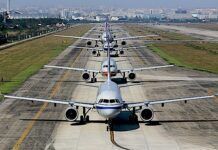
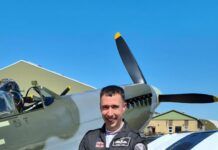



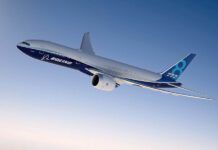



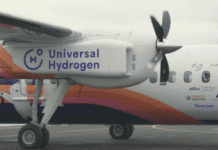







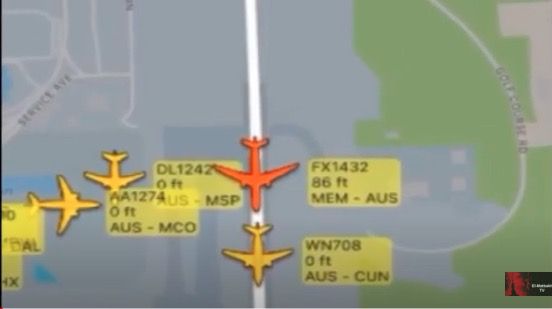
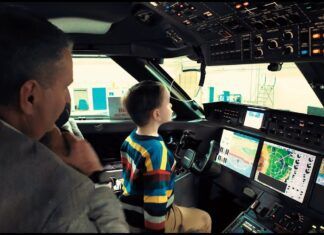
Let’s just see what the FAA does to this/these controller(s) IF it’s true that the story is as reported? I’d also like to know why the landing crew let it get down to 100′ before initiating a go around? Can you imagine what would happen if the error was the FedEx crew’s fault. The Feds would be hollering for their blood! Thankfully, another Tenerife didn’t occur.
Now let’s extrapolate to a point into the future where cargo airplanes are allowed to be unmanned. The FedEx jets ‘systems’ woulda allowed it to continue right up to the point where it ate the APU of the Southwest jet and the lights went out. NO THANKS!
Larry, that’s some extrapolation. The aviation industry surely owes you a debt of gratitude for identifying such a danger looming in our future – guess the answer is we need to stick with real pilots and controllers who never make mistakes, huh?
Larry – Take a look at the Metar at the time of landing to know why the crew did not start the go around until 150′ AGL. They had 200ft vertical visibility, Freezing Fog and 1/8-1/4 horizontal visibility.
Fine. That was not mentioned in the narrative. So … what does a reader have to do … an hours worth of research for every article?
Only if the facts matter.
The reader has to not draw conclusions based on obviously sketchy information in brief preliminary news stories.
The foundation of the issue was the weather. There’s lots more to the story …. a) granting the takeoff clearance with FedX that close b) ignoring FedX call with their position c) SWA taking more than a full minute from receiving clearance to starting to roll d) although the Fed X pilot did not have the “authority” to call for SWA to abort the takeoff , he was the ONLY one with situational awareness. SWA’s denial that they could abort will be without the cockpit tapes. What was the traffic clearance requirement for issuing a Cat III landing clearance?
Issuance of a CatIII landing clearance when there will be traffic on the runway with Fed X inside the FAF and with SWA in the ILS localizer sensitive area.
Professor Feynman described the loss of the Challenger as due to the normalization of deviation; that sounds like a pretty good description.
No just don’t comment if you’re unfamiliar with Cat III ILS procedure, which basically means the plane lands itself using autopilot.
Automation has its pitfalls but any such system would inevitably include automatic monitoring via ADS-B or other means of all planes’ exact positions, thus making avoidance of this type of conflict much more likely.
Wow – just listened to some analysis of the incident on the usual Youtube channels – Russ’ reporting does not mention that conditions at Austin were foggy at the time and that the FedEx 767 was performing a Cat III ILS approach. The tower controller should not have permitted the Southwest 737 to take the runway ahead of the FedEx jet as that could have interfered with the ILS radio signals that they were depending on for the low vis approach. The tower controller apologized to the FedEx for the error. Glad that the FedEx jet performed the missed and got the hell outta Dodge, thus avoiding a possible disastrous outcome.
This. There’s an ILS exclusion area painted very prominently on the runway for a reason. The controller cleared Southwest into this exclusion zone while the widebody was on the ILS. Clear violation of procedures that could have ended very, very badly for both a/c, crews and passengers while the guy sitting in the tower only risked falling out of his chair.
Clearly an ATC mistake. And I’m an air traffic controller. Cat 3 approaches have to be to a pristine runway. The one thing not mentioned, is there are no ILS critical area markings on the taxiways that the Southwest taxied over to get to the runway. I bet there are now (caution, wet paint).
Thank you for that clarification. Can’t quite imagine why the required markings were not there at a busy commercial airport.
Actually, based on the placement of the glide slope antenna (on the left side of the runway), and judging by the placement of the ILS critical area markings on Taxiway Echo, it’s pretty clear that the Southwest flight was never in the ILS Critical Area.
(There was plenty wrong with what happened, but not that.)
Does ATC have the discretion to dispatch a flight onto a low/no-vis runway currently in use by an ILS CAT 3 inbound? It seems unlikely, doesn’t it?
Rob M., please correct me if you know different but the Southwest Jet was on the runway – I think you will find that put them smack dab in the ILS critical area.
I’m not suggesting that the Southwest crew was in the wrong here, as the tower controller had issued them a take off clearance. But since the FedEx jet was executing a Cat III ILS approach in low visibility and was only a few miles from the field, there should not have been an aircraft anywhere close to that runway, much less on it. Seems to me this is completely on the tower controller.
Hi Andrew, That’s not my understanding. The ILS critical areas (there are actually two of them) are defined by the areas around the glide slope and localizer antennas.
The localizer area is (to my understanding) never marked because it’s quite small. With the localizer antenna away from the runway end, it’s virtually impossible to have a taxiway or runway that enters into the critical area (although it appears that Detroit may have found a way: https://www.avweb.com/aviation-news/blocked-ils-signals-prompt-whistleblower-complaint/).
For the glideslope, you can visualize it as a (generally) equilateral triangle with the apex on the glide slope antenna. The glide slope antenna is typically to one side of the runway (more than 200-ft from the runway so as not to be in the Runway Obstacle Free Area), and roughly abeam the fixed distance markers. In Austin, the antenna is on the left side of the runway, while aircraft taxiing to the runway come from the right side of the runway. There is a taxiway (E) on the left side of the runway that goes to a TXDOT facility, and which has an ILS critical area marking on it.
Using Google Earth and drawing an equilateral triangle (aligned with the runway) with the apex on the glideslope antenna, and the “east” side just touching the ILS critical area markings on taxiway E, you can see that the other side of the triangle only barely nicks the corner of the runway.
So, at least from a physics point of view and assuming that the airport is reasonably flat, it’s unlikely that the Southwest flight was inside the critical area.
The runway is Localizer critical…
https://www.faa.gov/regulations_policies/orders_notices/index.cfm/go/document.current/documentnumber/7110.65
“3−7−5. PRECISION APPROACH CRITICAL AREA a. Aircraft and vehicle access to the ILS critical area must be controlled to ensure the integrity of ILS course signals whenever the official weather observation is a ceiling of less than 800 feet or visibility less than 2 miles. Unless the arriving aircraft has reported the runway in sight or is circling to land to another runway, do not authorize vehicles/aircraft to operate in or over the critical area, except as specified in subparagraph a1, whenever an arriving aircraft is inside the ILS outer marker (OM) or the fix used in lieu of the OM. PHRASEOLOGY− HOLD SHORT OF (runway) ILS CRITICAL AREA. ”
break, a1 is preceded by the word, “except”
except: (1) A preceding arriving aircraft on the same or another runway that passes over or through the area while landing or exiting the runway.
a1 does not allow takeoff.
I find it hard to believe that there are no ILS critical zone markings at AUS. I personally had to make two missed approaches in 600 RVR WX at KSEA when an Airbus 330 was holding short of the ILS critical line that was improperly painted too close to the runway. The airbus was clear of the runway but we received a warning on the HUD and the HUD annunciator panel at 100 feet RA. We never saw the Airbus on both missed approaches. We only saw the airbus after our third and successful CAT 3 approach and landing as we taxied clear of the runway. Even then we did not see the airbus until we were within a couple hundred feet of it. I would guess that the B767 autoland system gave the crew some sort of warning when the Localizer became misaligned because of the B737.
There are ILS critical zone markings at AUS.
I’m not sure if there are ILS critical area lines. According to current Google Maps (map data 2023), the only ILS critical area lines I can find are 668ft east of the runway on a taxiway coming out of the DOT Flight Services ramp. There’s nothing shown west of the runway between the runway and terminal. (Holding position markings for ILS critical areas consist of two yellow solid lines spaced two feet apart connected by pairs of solid lines spaced ten feet apart extending across the width of the taxiway)
The markings and the critical area are only on the side of the runway with the GS transmitter antenna.
SV. Where I used to fly at KHFD Hartford-Brainard, there is an LDA approach (localizer no GS) and it has the ILS hold short lines. When I first started instrument training, we would occasionally see the LOC needle flickering left or right and my instructor would point out that that was probably being caused by aircraft taxiing across the LOC signal. In fact they have had major problems with that at Detroit. So for a CAT III runway I think it is amazing that there are no ILS holding lines.
It is strange that so few understand this fundamental issue.
I nominate Andrew to be the fact checker and proof reader for all future articles … great job, Andrew. OH … did you check the 7110.65 to determine what the regs say about how the local controller should have handled this situation? If so … report in, please.
I’m gonna remember this evolution next time I mess up … I’ll just apologize and everything will be OK.
Huh?
Did the FedEx crew give the tower a # to call after the incident?
When the pilot reports this type of incident the legal tapes are pulled the controller is pulled from duty. And every piece of equipment used is for this situation is recertification by a new technician that didn’t certify it before its use. There is then a long detailed investigation.
Yea, they treat this as much bigger deal than a pilot taking down a number.
According to today’s AvTalk podcast from Flightradar24, the tapes from both aircraft were not pulled. They exist and are overwritten after two hours if the aircraft continues on its scheduled flights. So apparently there is not cockpit voice recording from this occurrence.
Scary incident for sure BUT….we are all human, and they will not be able to remove the “Human” factor in aviation in my lifetime.
But, when a driver runs a red light there are consequences even when there is no accident.
A CAT III approach to near mins in freezing fog leaves little room for error or in the words lectured to men going to sea over centuries ” little room for any incapacity, carelessness or neglect”
Just a guess but I’d imagine someone was called into someone else’s office this morning for a friendly lil’ chat. AKA a good ol’ fashioned butt-chewing.
I listened to the radio traffic from vas-aviation you tube channel and this time he left the silence in real time.
What struck me was that the only crew that had good situational awareness was the FedEx crew. I understand the SW crew had clearance and the tower, in normal conditions would not hesitate to give clearance, but given the actual conditions, rvr at most 1600, habit got in the way of viewing/assessing the clearance.
When SW called up, the tower knew FedEx was on close to a short final (3.1 miles) on a CAT III approach so he was calling it close to allow SW to line up and go. SW knew that FedEx was coming down the pipe on a CAT III and was told so. He could have opted to wait the few minutes remaining before the FedEx landed, then the plane took longer than the tower expected to start rolling.
I think the FedEx pilot even wanted to confirm the tower’s request to land and it was in that moment I felt the only one seeing the whole picture was the FedEx flight and they made a correct call.
Blame is never quite black and white and I bet that controller will be in some remedial training and won’t do that again. Likewise, I would hope pilots would learn from the actions of the SW crew which did not factor in three important pieces of information they had before they moved:
1 – There was a Heavy on final within a few miles (just over 1 min away)
2 – Weather was minimal evan at ground level meaning no visual of traffic
3 – CAT III requirements could be impacted if crossing onto runway.
They didn’t question the clearance and did not expedite the runway entry and takeoff (given just around 1:30 mins till the plane crossed the threshold. Regardless of looking at the ATC personnel, FARS are clear that in the end, it is the PIC held responsible and it is our responsibility to question (as FedEx did) a controllers request or clearance.
The FedEx pilots acted quite professionally and helped to stop what could have been a horrible accident.
SW was not officially made aware of the FedEx approach until after they were cleared and likely already on the runway. I have seen some folks claim proper SA would have told them because of the landing clearance, but I am willing to bet they were still on GND freq until immediately before their call to the tower and never heard the FedEx landing clearance and were not aware of their presence until well after their takeoff clearance.
While it would be interesting to learn when they switched, but look at the timeing (factore the FedEx call as 0:
0 secs time – FedEx calls in
9 secs: Tower start clearance
21 sec: FX reads back clearance
27 secs SW calls in to tower
(Observations, it could be they switched in that 27 secs)
33 sec: Tower gives clearance and specifically states 676 Heavy on 3.1 mile final
47 secs: Sw acknowledges clearance and there is traffic.
1:04: FX Asks to confirm landing clearance.
1:09 Tower states to continue departing is B737
1:45 Tower asks SW if they are rolling
1:48 SW responds Rolling now.
Observation, that was close to 1 minute between ack clearance and stating rolling now.
2:06 FX calls out SW Abort (may have just seem them rolling or rotating)
2:10 FX calls for Go around
2:20 Tower asks if SW can turn right (perhaps airborne at this point)
2:24 SW asks unable and maintains heading.
https://youtu.be/DjoDn8zQgb8
————————————-
When you listen to this it is hard to consider that while SW did have clearance, it was made aware of a larger airplane on close final, it could not see that plane thus could not determine if SW had time to move turn, then go to takeoff power and actually start rolling. At worst they took their time getting rolling (up to a minute) as the 767 approached at maybe 140 mph (122 kts).
I think when FedEx called abort at 2:06 is when they may have been just able to see the 737 either on the ground rolling, rotating or TCAS gave them a warning.
SA does play a factor here and i dunno, maybe just maybe when you are coming up to the stop short line you switch over and listen before jumping in or asking how close before going onto the runway.
Interesting comment on AvTalk from Flightradar24 podcast today at around 13:16. FedEx and possibly UPS have technology called Enhanced Vision Flight System, a group of sensors that allow the pilots to have a much better view in low visibility. The hosts think this may have been a factor in the FedEx go around if it were enabled. Apparently no commercial airliners have this technology installed yet.
It will be interesting to see where Southwest was when they were cleared for takeoff, at the end of the runway or further down the taxiway. You will sometimes hear a crew transmit they will be “ready to go when they get to the end” hoping to avoid a delay at the end of their taxi. Conversely some crews, in low visibility, might pause on the runway a little longer than usual, evaluating the conditions and getting ready for a low visibility takeoff. Either way that might have caused a takeoff delay that the controller did not anticipate when he issued the takeoff clearance.
For those still convinced that SW was in the ILS Critical area, take a look at a satellite view of this coord. It is where the glideslope antenna for 18L at KAUS is installed. 30.2005275, ,-97.6565410 Opposite side of the runway from where the SW aircraft was taxiing.
I believe that from a technical standpoint the ILS Critical area is actually a fan-shape from an apex at the GS antenna. Assuming it is symmetrical with the same angle left & right of the GS antenna it would indeed include at least the threshold area of the runway up to approximately the numbers. There would be no point in having critical area bars in addition to the regular hold short markings on the west side, as there should not be another aircraft cleared onto the runway with a CAT III on final. The reason for this is because no one can see anything under conditions like that, witness the fact the tower had to ask SW what their status was. Situational awareness on the part of FedX saved the day.
There is also the LOC sensitive area which I believe has to be clear through the CAT III approach
Sure is easy to speculate. The reality is, we are humans and humans make mistakes. Additionally, unless we know all the facts, we know nothing. Glad no one was hurt.
Anything accurately determined yet as to how far the SWA was down the runway when FedEx would have been crossing the runway threshold?
Max Trescott seems to say in his AvTalk podcast that the 767 overflew the 737 by 100 ft on the go-around. If that’s so I wonder how the 737 avoided a wake turbulence encounter.
I meant to say Aviation NewsTalk podcast (from today).